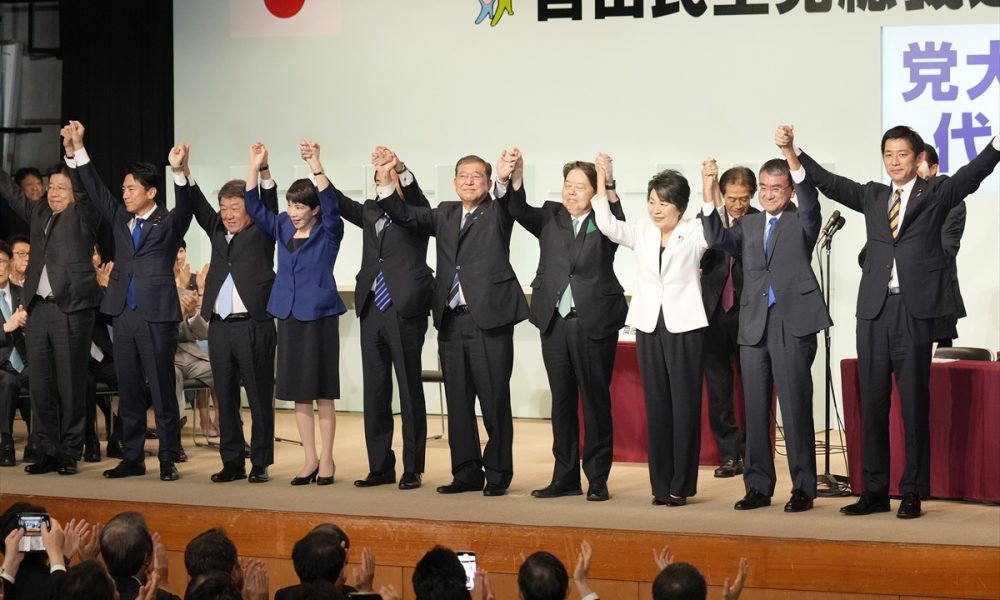Asia
Polls show Japan’s ruling bloc could lose its majority

With polls suggesting that the ruling Liberal Democratic Party-Komeito coalition could lose its majority in Sunday’s general election, speculation is mounting over what will happen next and whether a third party may need to step in to form a government.
A majority requires 233 seats in the 465-seat parliament. When the assembly was dissolved on October 9, the LDP held a total of 288 seats—256 for the LDP and 32 for Komeito. However, public outrage over an LDP-centered slush fund scandal has put the ruling bloc’s 55-seat majority at risk.
A poll by the Asahi Shimbun earlier this week suggested that the final seat count for both parties could fall below 233, raising the question of what would happen next in such a scenario.
Depending on the outcome, one option for the LDP and Komeito could be to invite the smaller Democratic Party for the People (DPP) into a coalition.
DPP leader Yuichiro Tamaki told reporters on Tuesday that his party has no intention of joining an LDP-led coalition. However, Tamaki did not rule out the possibility of the DPP cooperating with the LDP on policy areas where they align, such as the need for nuclear power.
Even if the LDP and Komeito retain power with a slim majority, there are questions about how effectively they can govern if they fail to meet two other key thresholds.
Under parliamentary rules, an absolute stable majority requires at least 261 seats, which allows the ruling coalition to chair committees and hold a majority of committee members. To have equal representation with opposition parties in committees, the ruling bloc needs at least 244 seats.
Asked about the possibility of adding a third coalition partner on BS Fuji Prime’s television program on Friday, LDP Secretary-General Hiroshi Moriyama said it was possible. Moriyama emphasized the importance of parties working together when they share common policies.
Another potential partner for the ruling coalition is Nippon Ishin no Kai, which holds 43 seats in the lower house and shares some of the LDP’s policy goals, including constitutional revision.
However, speaking at the Foreign Correspondents’ Club of Japan on Tuesday, Tomoaki Iwai, a political expert and professor emeritus at Nihon University, noted that both the DPP and Nippon Ishin face internal resistance to joining an LDP-led coalition.
“As far as the DPP is concerned, except for Tamaki and a few others, everyone in the party wants to return to the Constitutional Democratic Party of Japan (CDP),” he said, referring to Japan’s largest opposition party.
CDP leader Yoshihiko Noda hinted that the CDP, which had 98 seats when the Diet was dissolved, would be open to forming a coalition with the DPP if necessary. Japan’s largest trade union, Rengo, which supports both the CDP and the DPP, has been urging them to work together.
Nippon Ishin’s participation in an LDP coalition is also complicated by Komeito’s presence. Komeito and Nippon Ishin are running against each other for the first time in the ward elections, making a post-election partnership difficult. Additionally, Nippon Ishin leader Nobuyuki Baba has faced challenges after local election losses in Osaka, the party’s main stronghold, earlier this year.
“There are voices within Nippon Ishin, particularly among younger members, who want to remove Baba,” said Iwai.
He also noted that Osaka Governor Hirofumi Yoshimura might be open to working with the CDP.
Last month, Yoshimura expressed interest in running joint candidates with the CDP against LDP members implicated in the slush fund scandal. Although he stated that the decision ultimately rested with Baba, Nippon Ishin and the CDP had little time to coordinate candidates before the Diet was dissolved on October 9.
If the total number of seats held by the LDP-Komeito coalition falls below 233, an intense struggle could unfold as all parties maneuver to secure enough seats for either an LDP-led ruling coalition or a CDP-led bloc.
However, a resolution will need to be reached quickly. A special session of parliament is scheduled for next month to formally elect the new prime minister.